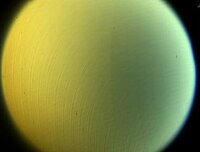
Photo from wikipedia
In the first paper of this series, we examined existing methods of optical meteor trajectory estimation and developed a novel method which simultaneously uses both the geometry and the dynamics… Click to show full abstract
In the first paper of this series, we examined existing methods of optical meteor trajectory estimation and developed a novel method which simultaneously uses both the geometry and the dynamics of meteors to constrain their trajectories. We also developed a simulator which uses an ablation model to generate realistic synthetic meteor trajectories which we use to test meteor trajectory solvers. In this second paper, we perform simulation validation to estimate radiant and velocity accuracy, which may be achieved by various meteor observation systems as applied to several meteor showers. For low-resolution all-sky systems, where the meteor deceleration is generally not measurable, the multi-parameter fit method assuming a constant velocity better reproduces the radiant and speed of synthetic meteors. For moderate field of view systems, our novel method performs the best at all convergence angles, while multi-parameter fit methods generally produce larger speed errors. For high-resolution, narrow field of view systems, we find our new method of trajectory estimation reproduces radiant and speed more accurately than all other methods tested. The ablation properties of meteoroids are commonly found to be the limiting factor in velocity accuracy. We show that the true radiant dispersion of meteor showers can be reliably measured with moderate field of view (or more precise) systems provided appropriate methods of meteor trajectory estimation are employed. Finally, we compare estimated and real angular radiant uncertainty and show that for the solvers tested the real radiant error is on average underestimated by a factor of two.
Journal Title: Monthly Notices of the Royal Astronomical Society
Year Published: 2019
Link to full text (if available)
Share on Social Media: Sign Up to like & get
recommendations!